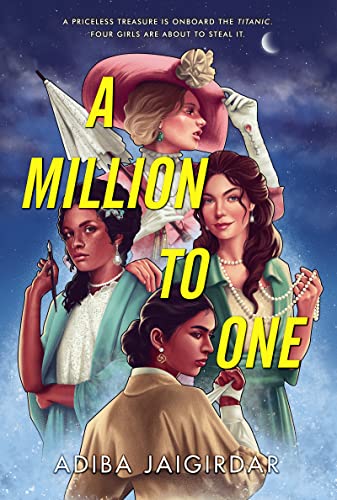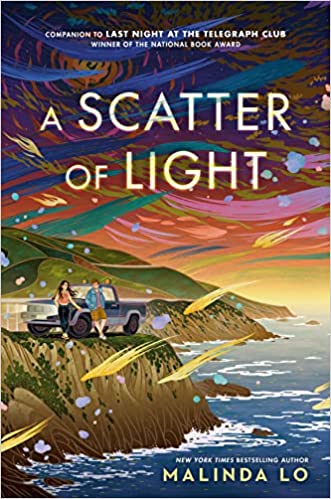Amazon Affiliate Link | Bookshop.org Affiliate Link I was ecstatic when I heard that Malinda Lo was writing a loosely connected follow up to Last Night at the Telegraph Cub because Last Night at the Telegraph Club is a hugely important lesbian coming of age novel set in 1950s San Francisco Chinatown that A) I wish I had hadRead More
Danika reviews A Million to One by Adiba Jaigirdar
Amazon Affiliate Link | Bookshop.org Affiliate Link This is a YA sapphic heist story set on the Titanic. I’m sure most of you have already stopped reading to go add it to your wishlist, but just in case, I’ll keep going. This is from the author of The Henna Wars and Hani and Ishu’s GuideRead More
Danielle Izzard reviews Nothing Sung and Nothing Spoken by Nita Tyndall
Amazon Affiliate Link | Bookshop.org Affiliate Link Nothing Sung and Nothing Spoken by Nita Tyndall is a queer YA historical fiction novel—a genre that I had yet to come across, and knew I had to read as soon as it was released. I was immediately intrigued by its poetic title, as well as by theRead More
Vic reviews The Wicked Remain (The Grimrose Girls #2) by Laura Pohl
Amazon Affiliate Link | Bookshop.org Affiliate Link The Wicked Remain by Laura Pohl is the follow-up to last year’s The Grimrose Girls and exactly the conclusion this duology deserved, which is to say it was clever, full of hope, with a clear love of stories and rage at their prescribed endings. While I will try to avoid spoiling eitherRead More
Danika reviews The Restless Dark by Erica Waters
Amazon Affiliate Link | Bookshop.org Affiliate Link During October this year, I tried to pack my TBR with seasonal, Halloween-adjacent reads, and The Restless Dark looked like the perfect match. It’s a sapphic YA horror/thriller book set at a true crime podcast event where listeners compete to try to find the unrecovered bones of aRead More
Til reviews The Ballad of Dinah Caldwell by Kate Brauning
Amazon Affiliate Link | Bookshop.org Affiliate Link This is the sort of review best begun with a caveat that I intend no ill will toward those who enjoyed the book… but maybe they’ll want to give it a miss, because I really do not like this book. In fact, I found the reading experience soRead More
Danika reviews The Drowned Woods by Emily Lloyd-Jones
Amazon Affiliate Link | Bookshop.org Affiliate Link “She had never been brave–but she’d always been angry. It would have to be enough. I picked up this Welsh dark fantasy heist novel because I was promised two things: a corgi and bisexuality. I’m happy to say that it delivered on both. And now I need moreRead More
Maggie reviews Galaxy: The Prettiest Star by Jadzia Axelrod
Amazon Affiliate Link | Bookshop.org Affiliate Link In Galaxy: The Prettiest Star, Taylor has a life-threatening secret. She is the Galaxy-Crowned, an alien princess hiding on Earth from the invaders that destroyed her home as a baby. Taylor’s guardian fled with her and two others to Earth, disguising themselves not only as humans, but alsoRead More
Danika reviews Doughnuts and Doom by Balazs Lorinczi
Amazon Affiliate Link | Bookshop.org Affiliate Link I love silly, fluffy sapphic graphic novels. I also seek out queer witchy books to read in October. So I thought this book was going to be a slam dunk! It’s about Margot, a witch who runs a potions business out of her kitchen and starts off theRead More
Danika reviews A Scatter of Light by Malinda Lo
Amazon Affiliate Link | Bookshop.org Affiliate Link As I was reading A Scatter of Light, I saw a tweet from Malinda Lo discussing how hard she’s finding summarizing this book into tropes and graphics to advertise it. I completely understand. This is a book about slowly unfolding self-discovery, the practice of making art, and theRead More
- « Previous Page
- 1
- …
- 9
- 10
- 11
- 12
- 13
- …
- 38
- Next Page »

